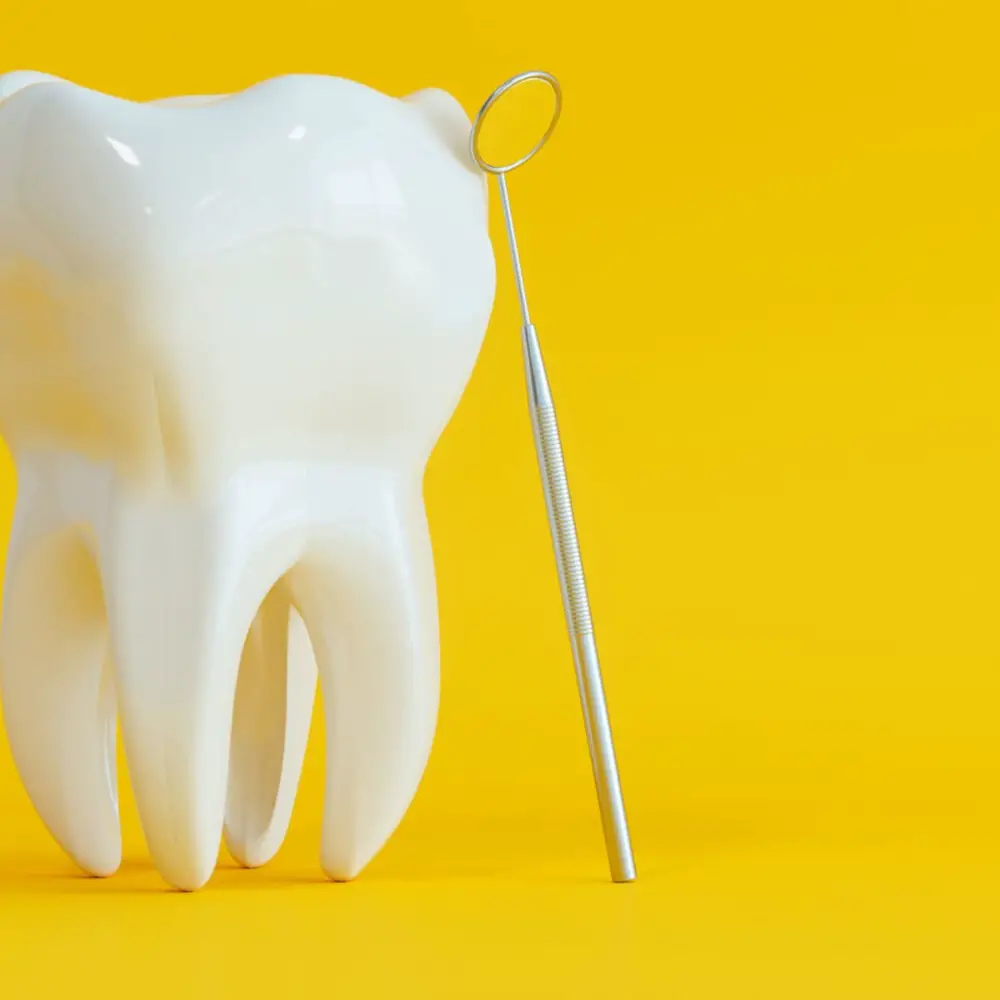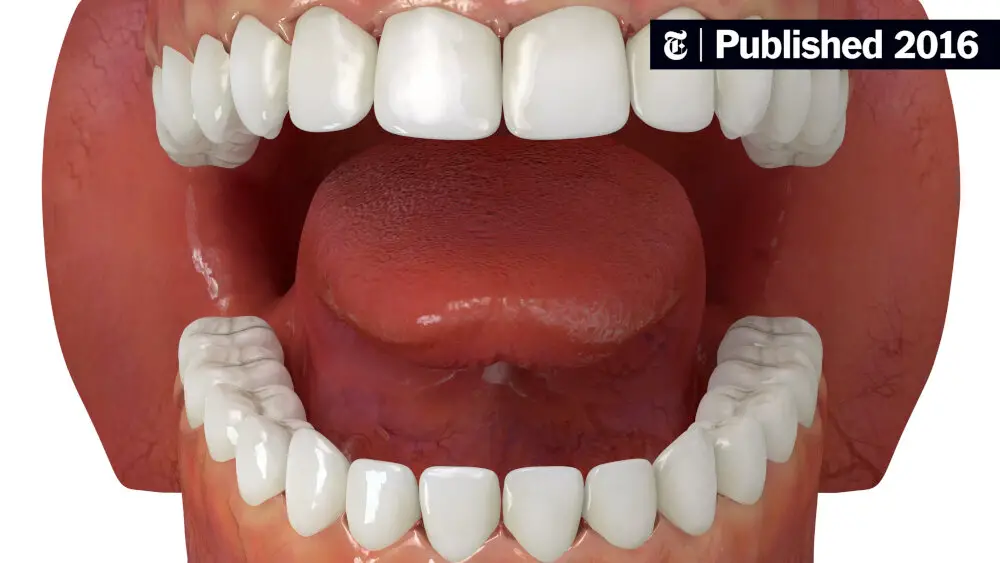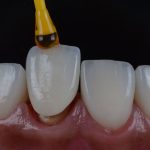Ultimate Guide: Anesthesia Options for Wisdom Teeth Removal

Wisdom teeth removal is a common dental procedure that requires anesthesia to help manage pain and discomfort during the surgery. Anesthesia options for wisdom teeth removal can vary depending on the patient’s age, medical history, anxiety levels, and the complexity of the procedure. In this ultimate guide, we will explore the various anesthesia options available for wisdom teeth removal and provide insights into their effectiveness and potential risks. Anesthesia is a technique used to induce a loss of sensation or consciousness to alleviate pain and discomfort during a medical or dental procedure. Anesthesia options for wisdom teeth removal can range from local anesthesia to general anesthesia, and it is essential to understand the differences between each option before making a decision. The type of anesthesia used for wisdom teeth removal can affect the patient’s comfort level during the procedure, as well as the recovery process after surgery. Therefore, it is crucial to consult with your dentist or oral surgeon to determine the best anesthesia option for your individual needs.
Wisdom teeth are the third and final set of molars that grow in the back of the mouth, typically appearing between the ages of 17 and 25 years. These teeth were initially necessary for early humans who had a diet that consisted of rough and hard foods that required powerful chewing. However, with modern advancements in food processing and cooking methods, these teeth have become obsolete, causing problems when they erupt. Wisdom teeth often grow in misaligned or impacted, causing discomfort, pain, and crowding of other teeth. As a result, many people opt to have their wisdom teeth removed to prevent any future complications.
Anesthesia plays a crucial role in wisdom teeth removal procedures. The complex and invasive nature of this surgery can cause immense pain and discomfort, making it essential to numb the affected area. Different anesthesia options, including local, general, and IV sedation, allow dentists to customize the level of sedation to the patient’s needs. Local anesthesia is commonly used to numb the mouth’s specific area where the wisdom teeth are being extracted, while IV sedation and general anesthesia can provide deeper levels of sedation. These options help patients feel calmer, reduce pain, and shorten recovery times. Moreover, anesthesia can prevent potential complications, such as jaw stiffness, bleeding, and infection, that can arise from the surgery. Therefore, it is crucial to consult with your dentist and choose the appropriate anesthesia option for a safe and comfortable wisdom teeth removal.
Local Anesthesia

Local anesthesia is a type of anesthesia that numbs a specific area of the body, such as the mouth, before a surgical or dental procedure. It is commonly used for procedures such as wisdom teeth removal, where the patient needs to remain conscious but pain-free during the procedure. Local anesthesia works by blocking the nerves that transmit pain signals to the brain, so the patient does not feel any pain or discomfort during the procedure. The effect of local anesthesia is temporary, and it wears off after a few hours. Local anesthesia is a safe and effective option for most patients, and it is less risky than general anesthesia. Local anesthesia is administered by injecting the anesthetic solution directly into the area where the procedure will take place, such as the gums or the inside of the cheek. The injection may cause some discomfort, but this is usually brief and mild. Once the anesthetic takes effect, the patient will feel numbness and tingling in the area, but they will remain alert and conscious. The patient may hear and feel some pressure or vibration during the procedure, but they should not feel any pain. After the procedure, the patient may experience some numbness and swelling in the area, but this should subside within a few hours. Local anesthesia is a popular choice for wisdom teeth removal because it is safe, effective, and allows the patient to remain conscious and alert during the procedure.
Local anesthesia is a type of anesthesia that numbs a specific area of the body, typically by injection. It is commonly used for wisdom teeth removal, as it allows the dentist or oral surgeon to work on the affected area without the patient feeling any pain. Local anesthesia works by blocking nerve impulses in the area where it is administered, which prevents pain signals from reaching the brain. This type of anesthesia is typically safe and effective, with few side effects. However, it is important for patients to follow their dentist or oral surgeon’s instructions before and after the procedure to ensure a smooth and successful recovery.
Anesthesia is a crucial component of wisdom teeth removal surgery. The type of anesthesia used depends on the complexity of the procedure and the patient’s pain tolerance. The most common anesthesia options for wisdom teeth removal include local anesthesia, nitrous oxide, IV sedation, and general anesthesia. Local anesthesia involves the injection of a numbing agent into the gum tissue surrounding the wisdom tooth. Nitrous oxide, also known as laughing gas, is inhaled through a mask and provides a relaxed, euphoric state. IV sedation induces a state of deep relaxation, while general anesthesia puts the patient to sleep completely. The choice of anesthesia depends on the individual’s medical history, the complexity of the surgery, and the preference of the dentist or oral surgeon.
When it comes to wisdom teeth removal, anesthesia is a crucial element to consider. The benefits of anesthesia include the elimination of pain, anxiety, and discomfort during the procedure. It also allows the dentist or oral surgeon to work more efficiently, reducing the overall time spent in the chair. However, there are also drawbacks to anesthesia, including potential side effects such as nausea, vomiting, and dizziness. Some patients may also have adverse reactions to anesthesia, making it necessary to choose the right type and dosage carefully. Ultimately, the choice of anesthesia will depend on various factors, such as the patient’s medical history, the complexity of the procedure, and the dentist’s preference.
When it comes to wisdom teeth removal, there are several anesthesia options available to patients. The procedure typically involves the use of local anesthesia, which numbs the area around the tooth being removed. However, for those who experience anxiety or have a low pain threshold, additional options such as nitrous oxide or IV sedation may be recommended. Nitrous oxide is a gas that is inhaled and provides a sense of relaxation and calmness, while IV sedation involves the administration of medication through a vein that induces a state of deep relaxation and may cause the patient to forget the procedure entirely. Ultimately, the anesthesia option chosen will depend on the patient’s individual needs and preferences, and it is important to discuss all options with the oral surgeon prior to the procedure.
The recovery process after wisdom teeth removal varies from person to person, but there are some general guidelines that can help patients navigate this important period. In most cases, patients should expect some degree of swelling, discomfort, and bleeding for the first few days. Pain medication and ice packs can help manage these symptoms, while a soft diet and careful oral hygiene can promote healing. It’s important to follow all post-operative instructions provided by the oral surgeon or dentist, including avoiding smoking and alcohol, not using straws, and attending any follow-up appointments. With proper care and attention, most patients can expect to feel back to normal within a week or two after their wisdom teeth removal.
Nitrous Oxide Sedation

Nitrous oxide sedation, also known as laughing gas, is a form of conscious sedation that involves inhaling a mixture of nitrous oxide and oxygen through a mask placed over the nose. Nitrous oxide is a colorless gas that has a sweet odor and taste, and it is commonly used in dentistry to help patients relax during procedures. The gas works by slowing down the body’s nervous system, reducing anxiety and creating a feeling of euphoria. Nitrous oxide is considered a safe and effective form of sedation for most patients, and it is often used during wisdom teeth removal procedures. One of the benefits of nitrous oxide sedation is that it takes effect quickly, usually within a few minutes of inhaling the gas. The level of sedation can be adjusted as needed throughout the procedure, and once the gas is turned off, the effects wear off quickly, allowing patients to resume normal activities shortly after the procedure. Another advantage of nitrous oxide sedation is that it does not require needles or injections, making it a more comfortable option for patients who are afraid of needles or have a low pain tolerance. Nitrous oxide sedation is also safe for most patients, including children and pregnant women, although it may not be recommended for patients with certain medical conditions or allergies.
Nitrous oxide sedation, also known as laughing gas, is a form of mild sedation used to reduce anxiety and discomfort during dental procedures such as wisdom teeth removal. It is administered through a mask that fits over the nose and mouth, allowing the patient to inhale a mixture of nitrous oxide and oxygen. The gas takes effect quickly and produces a sense of relaxation and euphoria, while also reducing pain sensitivity. Patients remain conscious and able to communicate during the procedure, but may experience a feeling of detachment from their surroundings. Nitrous oxide sedation is considered safe and effective, with few side effects and a short recovery time. It is often used in combination with local anesthesia for a more comfortable and stress-free dental experience.
Wisdom teeth removal is a common procedure that requires anesthesia to manage pain and discomfort during the surgery. There are several anesthesia options available, including local anesthesia, nitrous oxide, oral sedation, and general anesthesia. Local anesthesia involves numbing the area around the teeth with an injection, while nitrous oxide is a gas that is inhaled to induce a relaxed state. Oral sedation involves taking a pill to induce a drowsy state, while general anesthesia involves being fully unconscious during the procedure. The choice of anesthesia depends on the complexity of the surgery, the patient’s medical history, and personal preference. Your dentist or oral surgeon will discuss the options with you and recommend the best anesthesia option for your wisdom teeth removal.
When it comes to wisdom teeth removal, anesthesia is a crucial consideration. The benefits of anesthesia during this procedure are numerous. First and foremost, it can minimize or eliminate any pain or discomfort during the surgery. Additionally, anesthesia can help to reduce anxiety and fear in patients, making the experience more comfortable overall. However, there are also some drawbacks to consider. Anesthesia can have side effects, such as nausea, vomiting, and dizziness. It can also be more expensive and may require additional preparation and recovery time. Ultimately, the decision to use anesthesia during wisdom teeth removal should be made in consultation with a qualified dental professional.
The procedure details of wisdom teeth removal under anesthesia vary depending on the type of anesthesia chosen. Local anesthesia involves numbing the area surrounding the tooth with an injection, while IV sedation involves administering medication through a vein to induce a state of relaxation. General anesthesia involves being completely unconscious during the procedure. The surgeon will make an incision in the gum tissue, remove any bone blocking the tooth, and then extract the tooth. After the tooth is removed, the area will be cleaned and sutured if necessary. The patient will be monitored closely during and after the procedure to ensure a safe and comfortable experience. It is important to follow all instructions provided by the surgeon for a successful recovery.
The recovery process after wisdom teeth removal can range from a few days to a couple of weeks depending on the individual. It is important to follow the post-operative instructions provided by the dentist or oral surgeon, which may include taking prescribed pain medications, applying ice packs to the affected area, and avoiding certain foods and activities such as smoking and drinking through a straw. Swelling and discomfort are common during the first few days, but can be managed with proper care and rest. It is crucial to attend all follow-up appointments with the dental professional to ensure proper healing and prevent any complications. Though the recovery process may be uncomfortable, proper care can help ensure a smooth and successful healing process.
IV Sedation

IV sedation, also known as intravenous sedation, is a type of anesthesia that is administered through an IV drip in your arm. This form of sedation is commonly used during wisdom teeth removal, as it provides a deep level of relaxation and can make the procedure more comfortable for the patient. IV sedation is often preferred over general anesthesia, as it is less invasive and allows the patient to remain conscious and responsive throughout the procedure. During IV sedation, the patient will feel drowsy and relaxed, but will still be able to respond to verbal commands from the dentist or oral surgeon. The sedative medication used in IV sedation can cause temporary amnesia, so patients may not remember much of the procedure afterward. IV sedation is generally considered to be safe and effective, but it does come with some potential risks, such as low blood pressure, respiratory depression, and allergic reactions to the medication. Patients who are considering IV sedation for their wisdom teeth removal should discuss the risks and benefits with their oral surgeon or dentist.
IV sedation, also known as intravenous sedation, is a type of anesthesia used to achieve a state of deep relaxation during dental procedures, such as wisdom teeth removal. This type of sedation is administered through an IV line, which delivers medication directly into the bloodstream. IV sedation allows the patient to remain conscious and responsive to verbal commands, but they will have little to no memory of the procedure. This type of sedation is considered safe and effective, and it is often recommended for patients who experience anxiety or fear during dental procedures. The level of sedation can be adjusted throughout the procedure to ensure the patient’s comfort and safety. After the procedure, patients may experience some drowsiness and should have someone available to drive them home.
Before delving into the various anesthesia options available for wisdom teeth removal, it’s important to understand how anesthesia works. Anesthesia is a medical procedure that aims to prevent patients from feeling pain and discomfort during a surgical or medical procedure. It works by temporarily numbing the nerves that transmit pain signals to the brain or by inducing a state of unconsciousness. There are several types of anesthesia, including local anesthesia, general anesthesia, and sedation anesthesia. The type of anesthesia used for wisdom teeth removal will depend on various factors, including the complexity of the procedure, the patient’s medical history, and their personal preferences. Understanding the different anesthesia options available and how they work is essential for anyone considering wisdom teeth removal.
The benefits of anesthesia options for wisdom teeth removal are numerous. Patients can choose from a variety of options depending on their comfort level and the complexity of the procedure. General anesthesia allows patients to be completely unconscious during the surgery, while local anesthesia can numb only the area around the teeth. Sedation options can help patients relax and feel more comfortable throughout the procedure. However, there are also some drawbacks to consider. Anesthesia can be expensive and may not be covered by insurance. Some patients may also experience side effects or complications, such as nausea, vomiting, or allergic reactions. It is important to weigh the pros and cons of each option and discuss any concerns with your dentist or oral surgeon before making a decision.
When it comes to wisdom teeth removal, understanding the procedure details is crucial for patients. The surgery typically involves administering anesthesia to the patient to minimize pain and discomfort during the removal process. There are various anesthesia options available, including general anesthesia, local anesthesia, and sedation anesthesia. The type of anesthesia used will depend on the patient’s medical history and the complexity of the extraction. It’s important to discuss the anesthesia options and procedure details with your oral surgeon to ensure that you’re comfortable with the process and fully understand what to expect before, during, and after the surgery.
The recovery process after wisdom teeth removal can vary depending on the individual and the type of anesthesia used during the procedure. Patients who have undergone general anesthesia may experience grogginess and confusion immediately after the surgery, but this should subside within a few hours. It is common to experience pain and swelling in the first few days after the procedure, but this can be managed with pain medication and ice packs. A soft food diet is recommended for the first few days, and patients should avoid using straws or smoking as this can dislodge the blood clot and delay healing. Good oral hygiene practices, such as gently rinsing with salt water, can help promote healing and prevent infection. It is important to follow the post-operative instructions provided by the dentist or oral surgeon to ensure a smooth and speedy recovery.
General Anesthesia

General anesthesia is a type of anesthesia administered to patients undergoing invasive surgeries or procedures that require complete sedation. It works by inducing a state of unconsciousness, blocking pain sensations, and relaxing the muscles of the body. During general anesthesia, the patient is entirely unaware of their surroundings, and their vital signs are closely monitored by an anesthesiologist. This type of anesthesia is considered safe when administered by a qualified medical professional, and it allows for complex procedures to be performed with minimal discomfort to the patient. General anesthesia is often used for wisdom teeth removal because the procedure can be painful, and patients may experience anxiety or fear during the surgery. The anesthesia is typically administered through an intravenous (IV) line, and it takes effect quickly. Once the patient is under, the dentist or oral surgeon can extract the teeth without causing pain or discomfort. After the procedure, the patient will typically remain under observation until the effects of the anesthesia wear off. While general anesthesia carries some risks, such as reactions to the medication or breathing difficulties, these risks are rare and can be managed by a qualified anesthesiologist. Overall, general anesthesia is a safe and effective option for patients undergoing wisdom teeth removal and other complex procedures.
General anesthesia is a type of anesthesia that induces a state of unconsciousness and eliminates the sensation of pain throughout the body. It is typically administered through a combination of intravenous drugs and inhaled gases. During general anesthesia, the patient’s breathing is assisted with a ventilator, and vital signs are closely monitored by an anesthesiologist or nurse anesthetist. This type of anesthesia is often used for invasive procedures, such as wisdom teeth removal, as it allows for a pain-free and stress-free experience. However, general anesthesia does come with some risks, including the potential for allergic reactions, respiratory problems, and complications related to the cardiovascular system. Therefore, it is important to discuss the risks and benefits of this type of anesthesia with your healthcare provider before undergoing any procedure.
Anesthesia options for wisdom teeth removal depend on various factors such as age, medical history, anxiety level, and the complexity of the extraction. The most common anesthesia options are local anesthesia, nitrous oxide sedation, IV sedation, and general anesthesia. Local anesthesia involves numbing the area around the tooth with an injection of a local anesthetic. Nitrous oxide sedation, also known as laughing gas, is a mild form of sedation that helps alleviate anxiety and reduces pain. IV sedation is a stronger form of sedation that induces a state of deep relaxation. Finally, general anesthesia is a complete loss of consciousness induced by medication and is usually reserved for complex cases. The choice of anesthesia will be made by the dentist or oral surgeon based on the patient’s needs and preferences.
When it comes to the anesthesia options for wisdom teeth removal, there are both benefits and drawbacks to consider. One of the main benefits of anesthesia is that it helps to minimize pain and discomfort during the procedure, which can be especially important for those with dental anxiety. Additionally, anesthesia can make the procedure go more smoothly and quickly, reducing the risk of complications. However, there are also some drawbacks to anesthesia, such as the potential for side effects or allergic reactions. Additionally, some types of anesthesia may require more recovery time than others, which can be inconvenient for those with busy schedules. Ultimately, it is important to carefully weigh the pros and cons of each anesthesia option before making a decision.
When it comes to wisdom teeth removal, anesthesia options play a crucial role in ensuring a pain-free and comfortable experience for the patient. The procedure typically involves the administration of local anesthesia, which numbs the area around the tooth being removed. For more complex cases or patients who experience anxiety or fear, general anesthesia may be recommended. This involves the patient being put to sleep and completely unconscious during the procedure. Additionally, sedation options such as nitrous oxide or oral sedatives can help to relax the patient and make the procedure more manageable. Ultimately, the anesthesia option chosen will depend on the patient’s individual needs and the complexity of the procedure, and should be discussed thoroughly with the dental professional performing the extraction.
The recovery process after wisdom teeth extraction can vary depending on the individual and the type of anesthesia used during the procedure. It is common to experience some discomfort, swelling, and bleeding in the first few days post-surgery, which can be managed with pain medication and ice packs. Patients are advised to rest and avoid strenuous activities for at least 24 hours after the procedure. Soft foods and liquids are recommended during the first few days, gradually transitioning to solid foods as the healing progresses. It is important to follow the post-operative instructions provided by the dental professional to ensure proper healing and avoid complications such as dry sockets. With proper care, most patients will fully recover within a week to ten days following wisdom teeth extraction.
Wisdom teeth removal is a common procedure that requires anesthesia to provide pain relief and reduce anxiety. There are several anesthesia options available, including local anesthesia, nitrous oxide, oral sedation, IV sedation, and general anesthesia. Local anesthesia is the most common option and involves numbing the area around the tooth. Nitrous oxide, also known as laughing gas, is a mild sedative that can help patients relax during the procedure. Oral sedation involves taking a pill before the procedure to induce a state of relaxation. IV sedation is a more profound form of sedation that requires a needle to be inserted into a vein to administer the medication. General anesthesia is the most profound form of sedation, where the patient is put into a deep sleep and is not aware of the procedure. The choice of anesthesia depends on the patient’s medical history, anxiety level, and the complexity of the procedure.
When considering anesthesia options for wisdom teeth removal, there are several factors to take into account. Firstly, the patient’s medical history and current health condition must be evaluated to determine the most suitable anesthesia method. Age, weight, and anxiety levels of the patient also play an essential role in selecting the anesthesia option. The complexity of the extraction procedure and the estimated time required for the surgery are additional factors that need to be considered. Some patients may prefer to remain conscious during the operation, while others may opt for complete sedation. It is crucial to discuss all available options with the oral surgeon and anesthesiologist to make an informed decision that prioritizes the patient’s safety and comfort.
When it comes to wisdom teeth removal, it’s crucial to discuss all the anesthesia options with your dentist or oral surgeon. This is because anesthesia plays a significant role in ensuring a comfortable and safe experience during the procedure. Depending on your medical history, anxiety level, and the complexity of the extraction, your dentist may recommend general anesthesia, local anesthesia, or a combination of both. It’s essential to have a thorough discussion with your dentist to understand the benefits and risks of each option, so you can make an informed decision that best suits your needs. By having an open and honest conversation with your dentist, you can alleviate any concerns or fears you may have and ensure a successful and comfortable wisdom teeth removal experience.
Conclusion

In conclusion, the anesthesia options for wisdom teeth removal provide a range of choices for patients to ensure their comfort and safety during the procedure. The decision on which option to choose should be made after a thorough consultation with the dentist or oral surgeon. It is important to consider factors such as anxiety levels, pain tolerance, medical history, and the complexity of the extraction. Local anesthesia, nitrous oxide, IV sedation, and general anesthesia are all viable options, each with their own benefits and risks. Ultimately, the goal is to minimize discomfort and complications, while ensuring a successful and smooth procedure. With the right anesthesia option and a skilled oral surgeon, patients can have a stress-free and positive experience when having their wisdom teeth removed.






